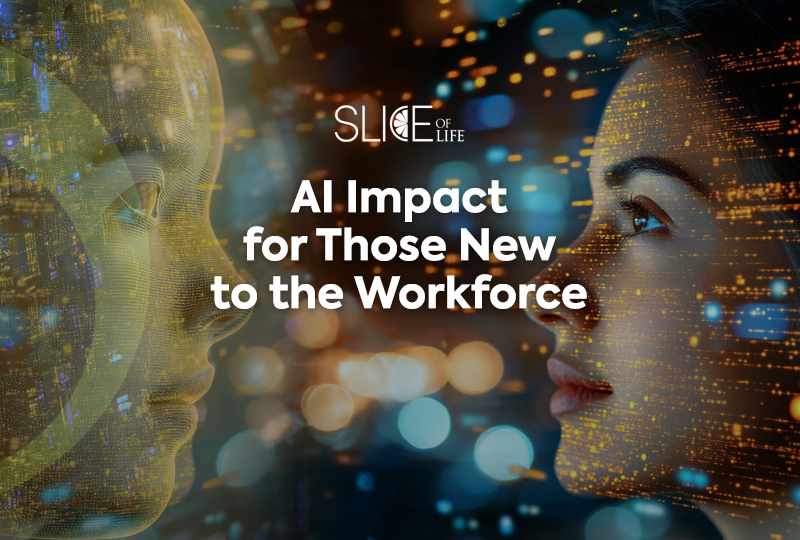It’s impossible to tune out the incessant alarmist hysteria related to AI. There is a palpable fear for many that advanced AI tools are poised and ready to allow all the robots to steal all human jobs and throw society in disarray. The truth is more complicated but hopefully a tad more comforting. All major technological change comes with growing pains, and some sectors will feel that strain more than others. Therefore, it is important for college students entering the workforce to be prepared to adapt to AI as it applies to their expected workloads.
Remember when LED light bulbs were popularized? These more efficient marvels of technology deeply disrupted the lighting industry, requiring businesses to quickly reimagine their production or close up shop. It is the same thing with AI, except AI has much broader applications in most industry sectors. There are some educated predictions about how AI is currently making, and will continue to make, changes in the job landscape, so let’s explore those.
The general consensus so far is that AI will likely eliminate the need for humans occupying certain roles that are more repetitive in nature, while there will be job creation or job reinvention in industries that require human nuance. Certain job types that could be considered vulnerable to AI interruption include data entry, telemarketing and cashiers among others, according to Unmudl. Pew Research Center has examined who and where in the U.S. lies the most exposure to AI. So far, AI’s current level of capabilities makes it most suited for information collection and data analysis, so jobs related to these tasks are considered more exposed to AI.
But again, that doesn’t necessarily mean that jobs with high exposure to AI are going to be replaced by AI, but it might mean that more mundane and simpler tasks are delegated to AI as more time is opened up for more complex projects. AI comes less into play for very hands-on and potentially multifaceted labor, like child care, plumbing or hairstylists. In contrast, jobs that are considered to be at a higher level of exposure to AI also are those in higher paying fields, so simple avoidance of working with AI is not necessarily the best strategy.
How AI Impacts College Students and Recent Graduates
Insider Higher Ed conducted a survey in January 2024 to determine how college students are reacting to AI innovations. The survey included responses by 1,250 students from 49 four- and two-year colleges, with some interesting takeaways.
- Students are taking AI into account as they chose their courses of study. The classes that are just starting their collegiate journeys or are a few years in appear to be more likely to pivot based on the growth of AI. The Class of 2027 reported at 64 percent being at least somewhat impacted by AI when choosing their academic plans. Also, students not receiving financial aid indicate AI’s impact on their choices at 60 percent either a lot or somewhat, compared to 45 percent for those receiving financial aid.
- Students are reporting that AI has impacted their career plans. With each subsequent year until graduation, the concern appears to go up related to this topic. The Class of 2027 reports at 61 percent (a lot or somewhat) that AI has impacted career plans, roughly 10- 30 percent higher than the previous 3 classes.
- Most students demand that their institutions need to be preparing them for AI in the workplace. Nearly three in four students say that their colleges or universities should be preparing them for AI in the workplace in varying degrees from a lot to somewhat. Likely this preparation will have to develop organically over time and will differ based on focus of study. The ethics of AI and practical uses of AI are both key areas students are interested in knowing more about.
As we have explored in previous AI-related content, The implications for what AI can do is truly still in its infancy or toddler stages, but it is compelling to see what some businesses are doing to capitalize on it in ways that could be very beneficial to the public. Life University, for example, is well-known for its stellar chiropractic college. Our chiropractic students might be interested to know how AI is being used to simplify health care. Chiro Health USA (CHUSA) launched ChiroAI, a chiropractic virtual assistant that aids chiropractors in answering urgent business and clinical questions. That’s just one example of how the toolbelt of AI can be applied.
From a marketing perspective, AI unlocks vast opportunities for targeted advertising, search engine optimization (SEO), personalized patient engagement, simpler automated customer service and predicting popular marketing trends to enhance the reach of Chiropractic. Regardless of the field, AI is not just a fad; it is here to stay, and smart businesspeople should begin to figure out how to utilize it in a way that makes sense and in an ethical manner.
References
https://www.forbes.com/sites/serenitygibbons/2023/12/07/how-ai-might-impact-the-job-market-in-2024/
https://living.life.edu/chiropractic/can-ai-be-a-useful-chiropractic-marketing-tool/


Social Media